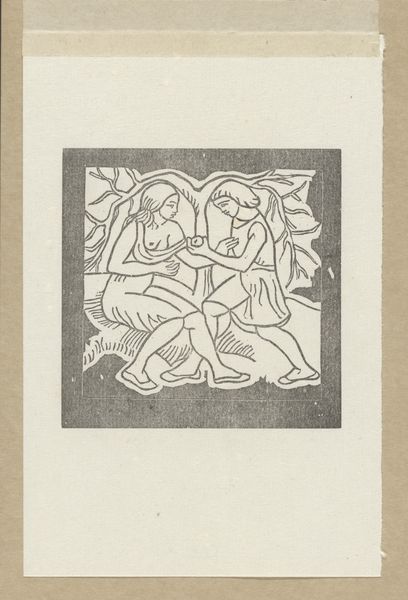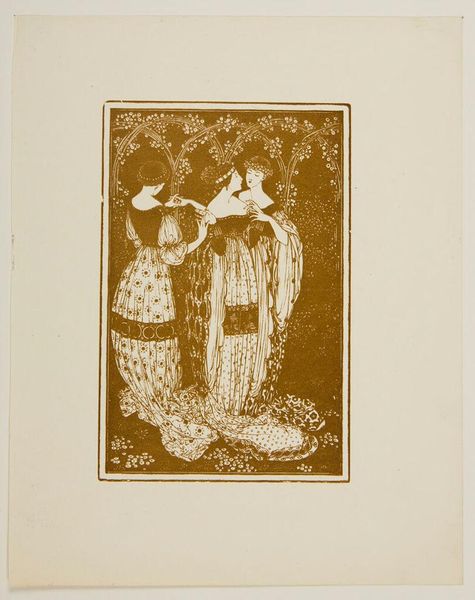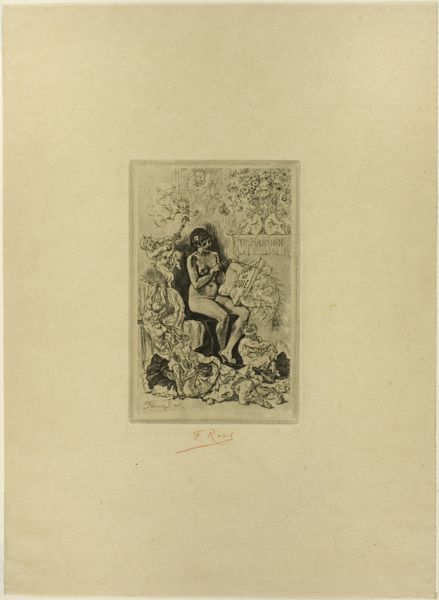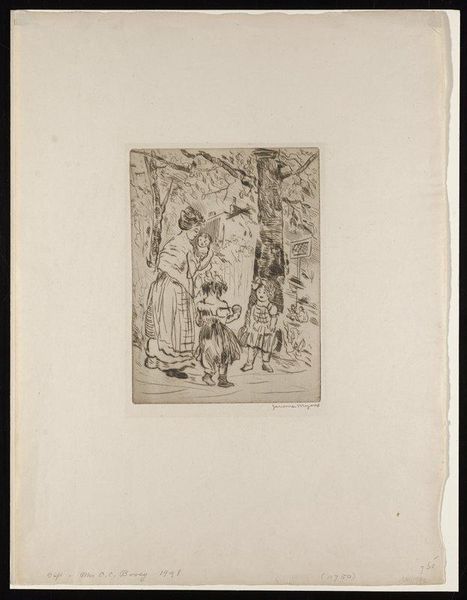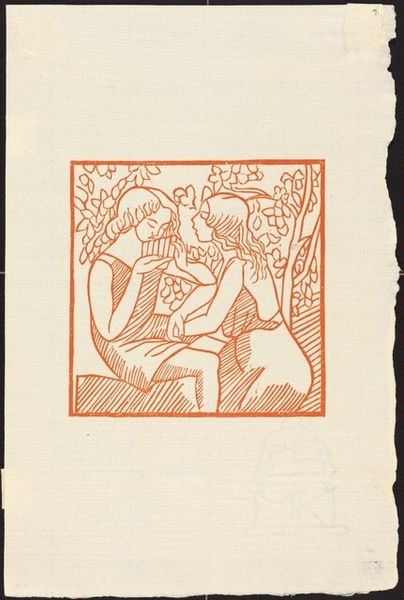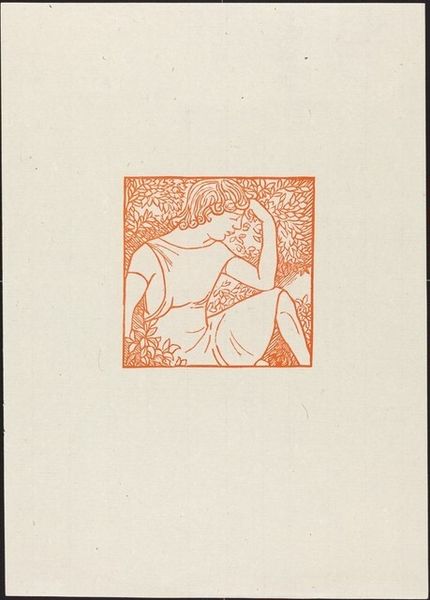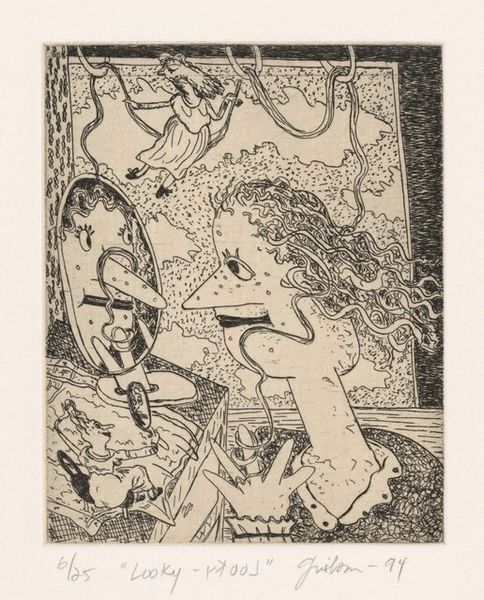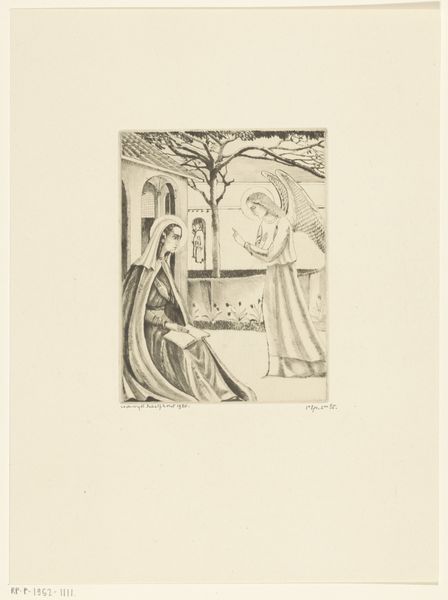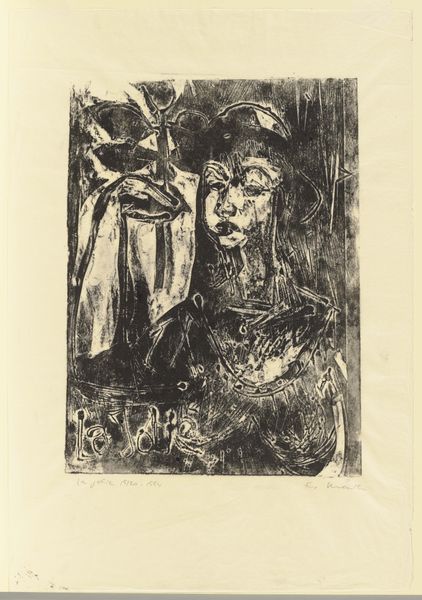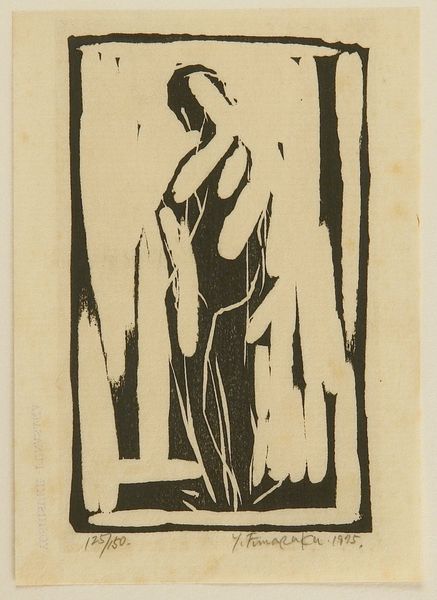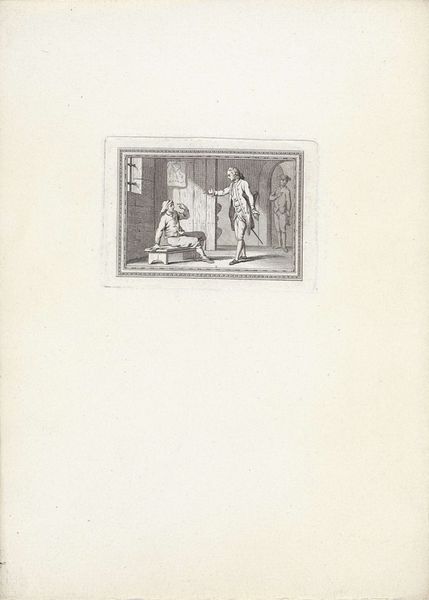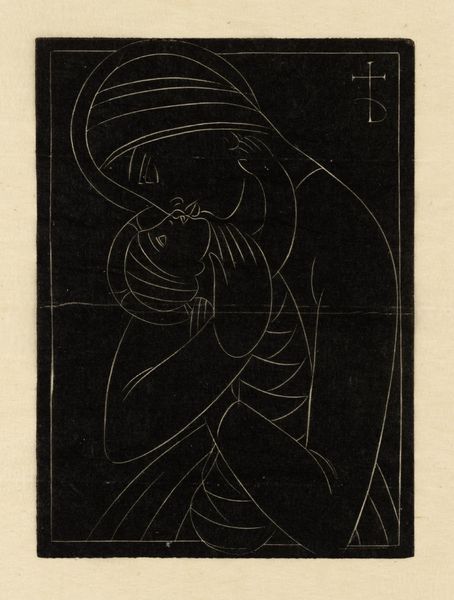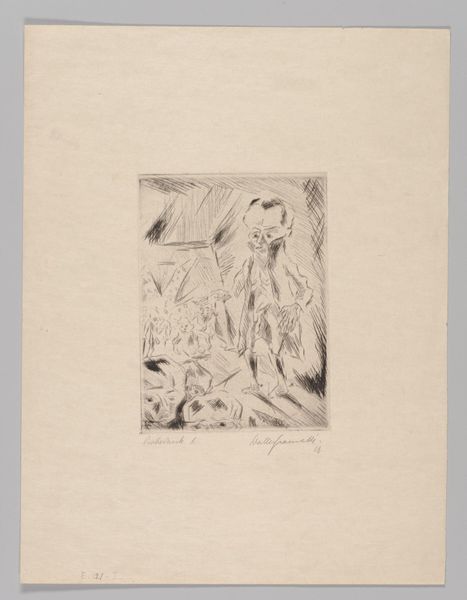
print, woodcut
# print
#
old engraving style
#
landscape
#
figuration
#
woodcut
#
line
#
symbolism
Dimensions: height 212 mm, width 139 mm
Copyright: Rijks Museum: Open Domain
Editor: So, this is Jan Toorop's "Twee meisjes in een landschap," made around 1895. It's a woodcut print. It’s very linear, almost stark. What draws your eye when you look at it? Curator: I’m immediately struck by the symbolic weight Toorop gives these two figures within the context of late 19th-century anxieties about femininity. We see these women positioned in a stylized landscape, but what do you notice about their interaction, their gaze? Editor: They seem…disconnected. Not really engaging with each other, or even with us. Curator: Exactly. Toorop was part of a Symbolist movement grappling with shifting social roles, particularly for women. Consider the "femme fatale" archetype emerging at the time – do you see echoes of that here? Perhaps not in the conventional seductive sense, but in a more subtle representation of female disquiet or perhaps even a rejection of traditional expectations? Editor: I can see that, especially knowing it’s a Symbolist piece. The way they're presented does feel less like a portrait and more like a statement about something larger than themselves. What would those expectations have been for women at the time? Curator: They would have included expectations surrounding domesticity, motherhood, and subservience. Consider, then, the lack of engagement, the somewhat obscured landscape – it all contributes to a sense of unease, of these women existing outside or in opposition to those confines. It speaks volumes, doesn't it, about the era’s changing perspectives and anxieties surrounding women and their place in society? Editor: Definitely. Thinking about it that way gives the image so much more depth than just seeing it as a simple depiction of two girls. Curator: Absolutely. It's a testament to the power of art to reflect and even challenge the dominant ideologies of its time, especially when read through a lens sensitive to issues of gender and social power.
Comments
No comments
Be the first to comment and join the conversation on the ultimate creative platform.

